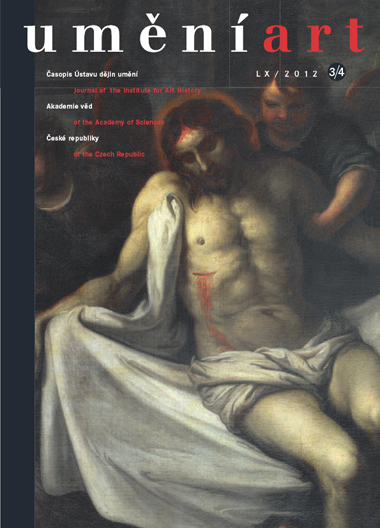Jindřich Vybíral
Der tschechische Kubismus auf dem Markt symbolischer Güter. Ursprung und Grenzen eines Begriffs der Architekturgeschichte
Few phenomena in the history of Central European architecture have enjoyed the amount of attention from researchers as Czech cubism. However, the question of what is actually cubist about Czech 'cubist' architecture has only been raised by a handful of scholars. The intentions of Czech 'cubists' have been scrutinised by Rostislav Švácha, Ákos Moravánszky, and Alena Janatková. The foundation of Czech cubism has been traced to German, psychologically oriented art theory, but the explanation that unfortunately continues to dominate in general knowledge and, unfortunately, in historiographical studies is that the cubists' work was a reaction to contemporary events in French artistic culture. This article cannot avoid polemicising with these established interpretations, but its primary objective is to examine the concept of architectural 'cubism', describe its genesis, and explain the function of this label. To this end it explores the reasons why this designation caught on in historical interpretations and why it endures today. The artists behind the phenomenon themselves referred to their work as 'new art', and they rarely used the term cubism or did so derogatively owing to the disputes over its real meaning that erupted following the publication of Albert Gleizes and Jean Metzinger's book Du Cubisme. 'Cubism' began to be used in Bohemia as a neutral expression for works of architecture only after the form of modernism represented by Emil Filla and Vincenc Kramář won out in the competition for the monopoly on artistic recognition. Use of the term 'cubism' was a clear and unambiguous expression of Czech modernism's orientation towards Paris, which represented the sole legitimate centre of development of this concept. The chosen term neutralised contentious, anti-rationalistic, and even anti-modernist aspects in Pavel Janák's cubist movement. There were moreover nationalistic motives in modern art historiography for eliminating links to German culture.
Full-text in the Digital Library of the Czech Academy of Sciences:
https://kramerius.lib.cas.cz/uuid/uuid:d6dd957e-24b0-4f2e-4769-7c846b52ec46
< back

